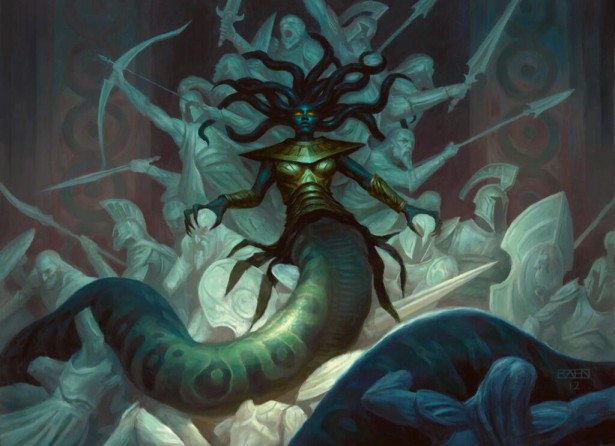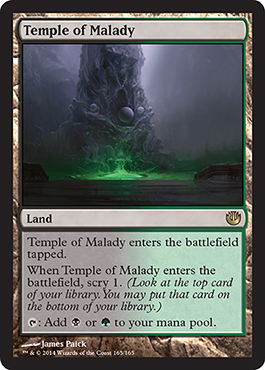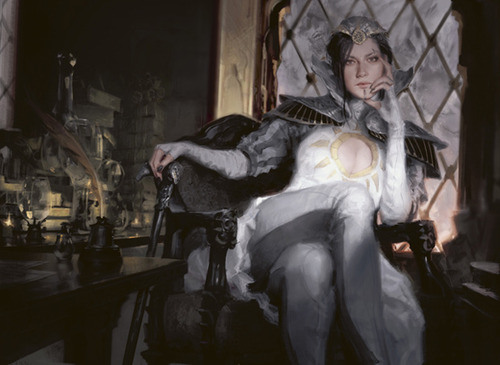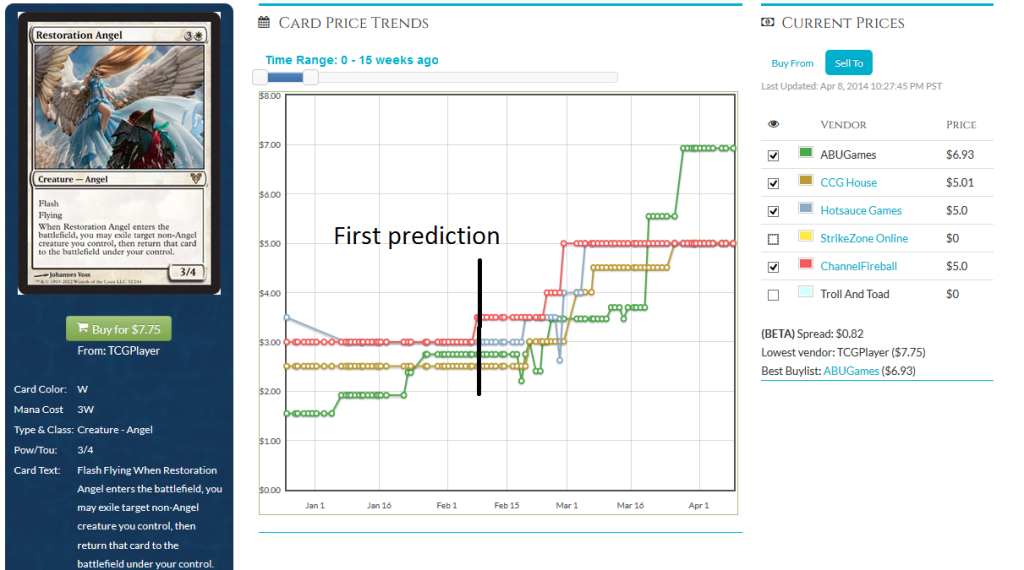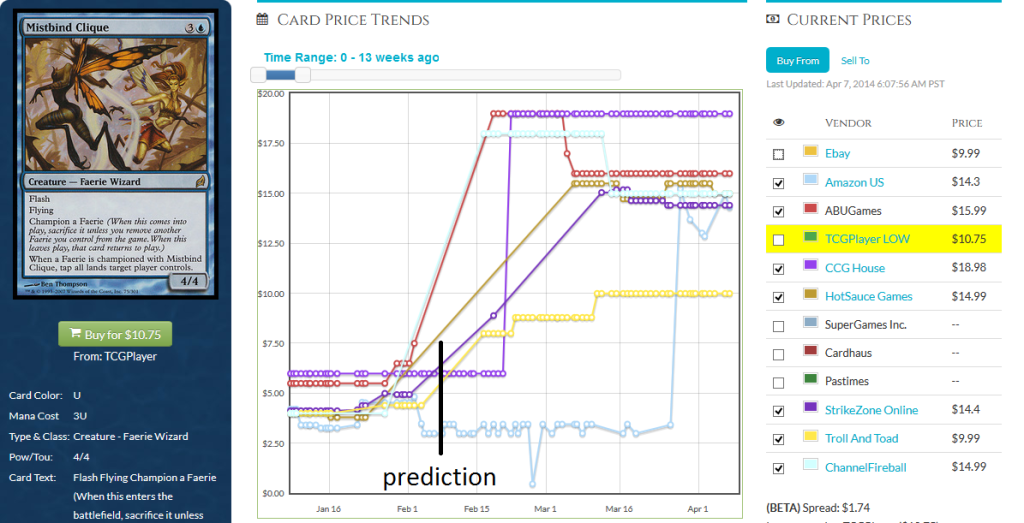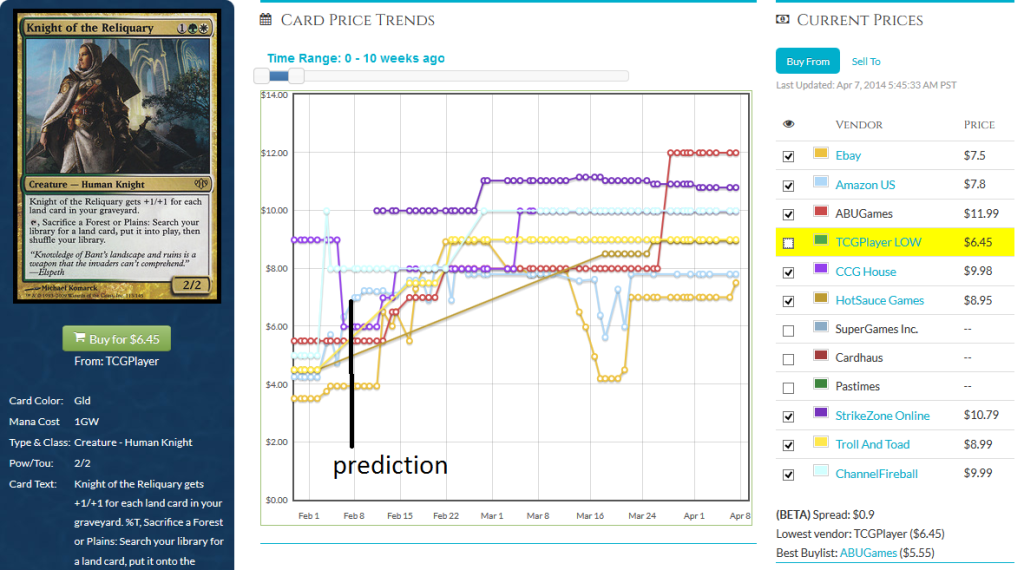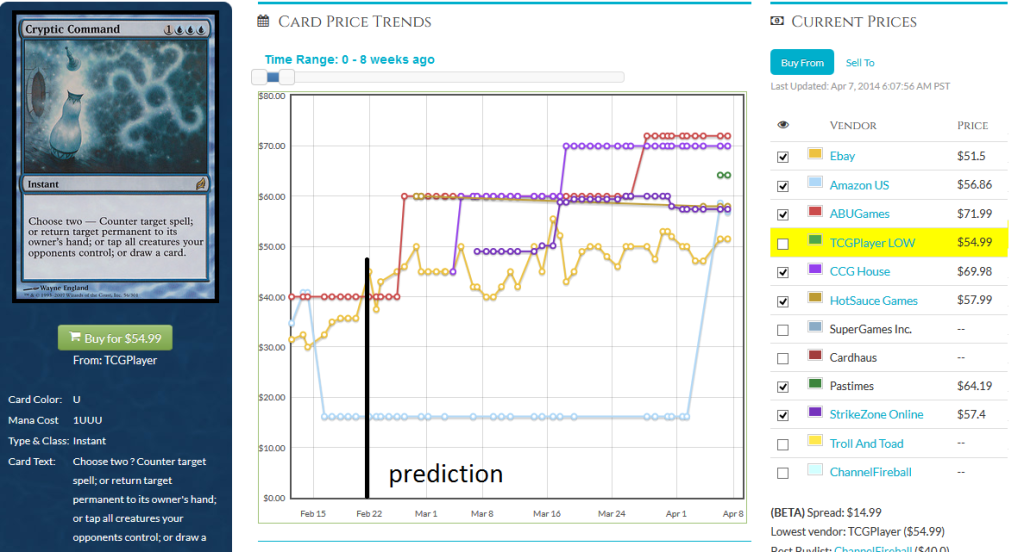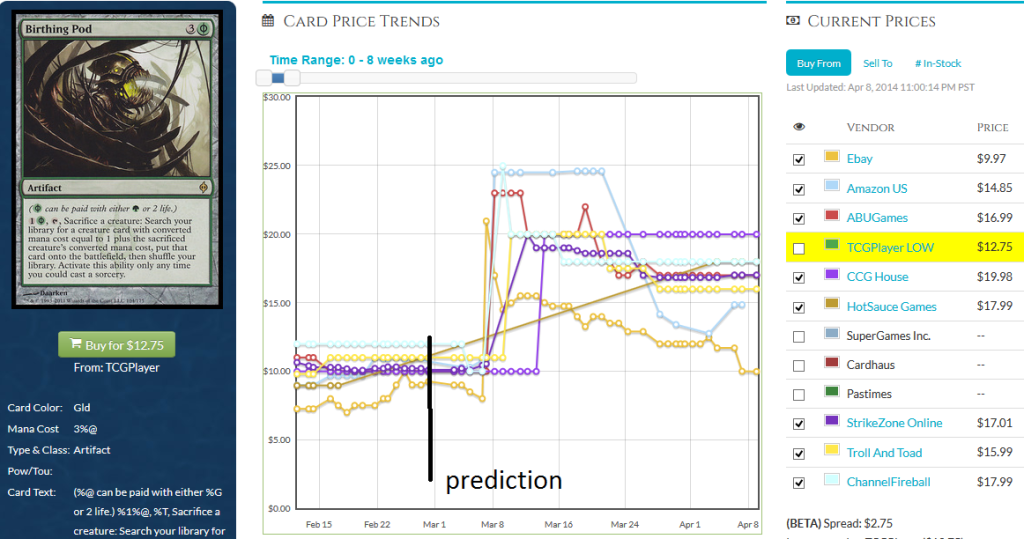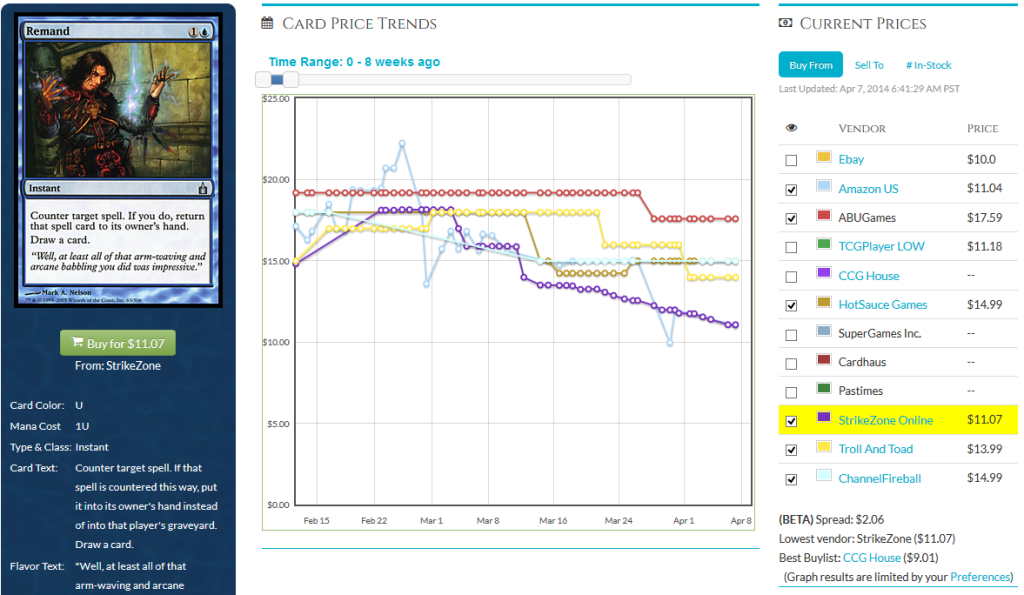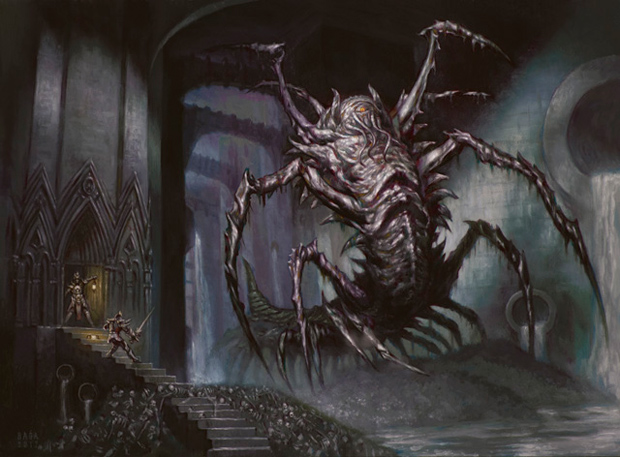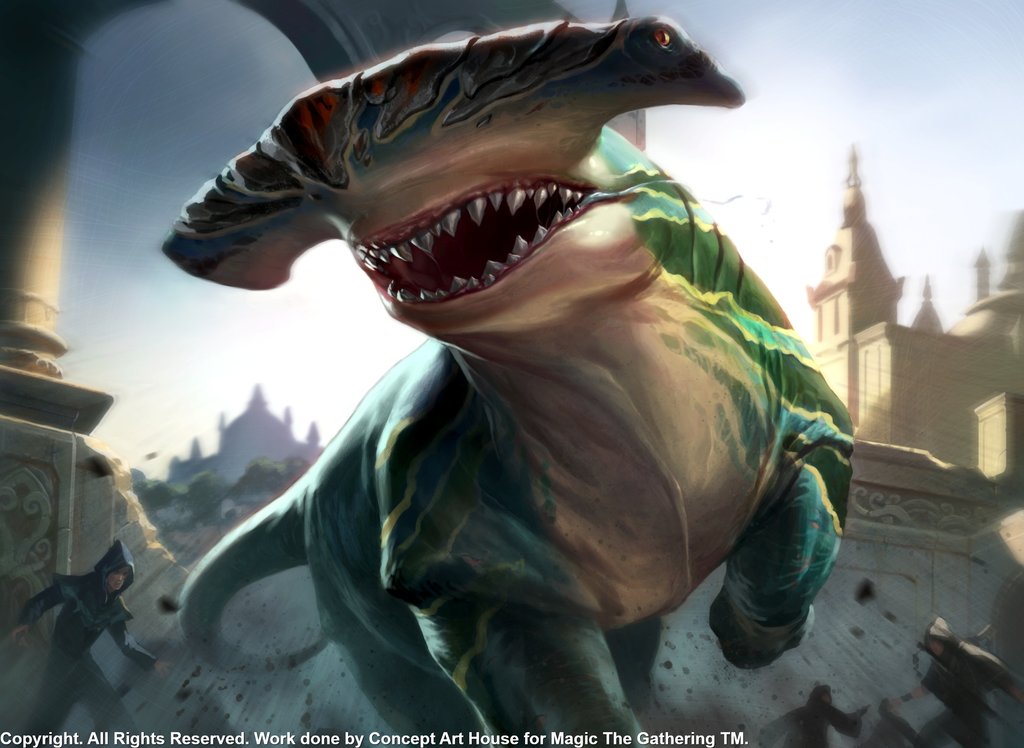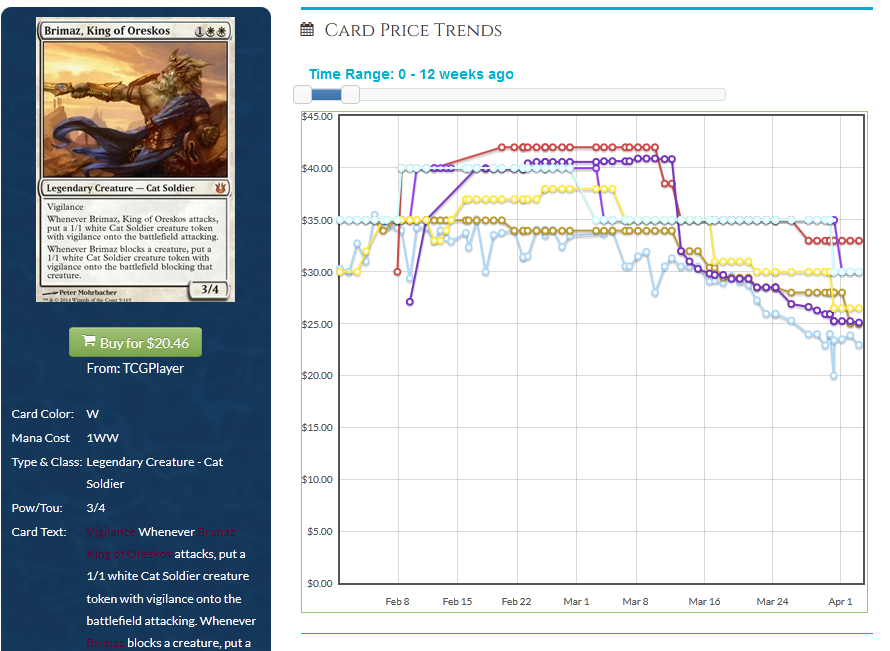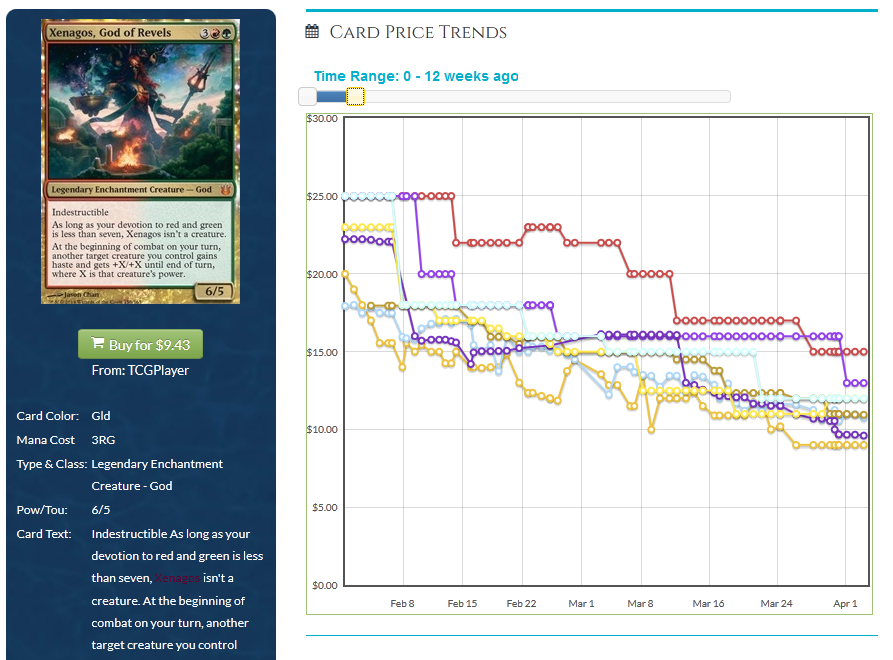By: Cliff Daigle
My goal is always to increase the long-term value of my collection. I’m not thinking in weeks or sets, I’m thinking in months and years.
Right now, there’s a few cards that I’m targeting. I’m not aggressively spending money here, but I am picking these up in trades whenever possible.
Conversely, there’s a few cards I am looking to get rid of. The idea of ‘When should I get rid of my rotating cards?’ is something that I and other writers have covered on this site, and my answer is always “Early.”
If you wait to get rid of these cards, then you’ll be one of very many people who are no longer playing these cards and are trying to trade them away. No one will be seeking these out during the summer, so if you want to get maximum value, the time is now. Keep one set for the Standard deck you’re playing all summer, and understand that you’re getting value out of the games, not the trade value of the cards.
First, the cards I’m trading away:
Desecration Demon, Pack Rat:
Right now, these cards are part of a winning strategy in Mono-Black Devotion. People want to play this deck, and it’s putting up results that give these once-bulk rares some surprisingly high prices. The truth is, between the clear lack of value at rotation, and being in the Event Deck, these have already started to decline.
That value will be even lower when the new block arrives in September and these lose their Standard legality. Keep a set if you want to play the deck, but right now you need to move these cards out.
Nightveil Specter:
Similar to the two above, only this sees play in Mono-Blue as well. There’s no future in Modern for this, and you should let others enjoy this card for six months.
Mutavault:
To be clear: I don’t think this is going to fall down terribly far. Modern has shown that it can keep some prices amazingly high. I do think that its current price of $30-$35 is sustainable in the long term, but that is a year or more away. I think there is profit to be made in trading it away now, and then getting some back when they rotate in September. I suspect these will be around $15-$20 then. The historical example would be Cavern of Souls.
Ad Nauseam:
I’m always going to side with those to advocate selling into the hype. If you have any of these, you likely didn’t get them at $8. It will take sustained success for this Modern deck to inflate the prices much further, so you’re risking substantial profits if you try to hold out for it to reach $10-$15. Don’t get greedy.
Most of Return to Ravnica block: 
I’m not sure that Deathrite Shaman is going to be the next Stoneforge Mystic, price-wise. The amount of supply is far greater, and the Legacy demand is far smaller. Jace, Architect of Thought is not good enough for Modern. Sphinx’s Revelation isn’t either. Boros Reckoner is riding a new wave of hype, sell into it.
I do advocate holding your Abrupt Decays, though. I think there is going to be a Modern boost to that card, it’s just too good against too many things.
Now, the cards I’m trading for:
Nykthos, Shrine to Nyx
Born of the Gods previews started this week (more on that next Friday) but I remain firmly convinced that this will be $15 around Christmas-time. This card is capable of some obscene tricks, despite its limitations. It has a chance to be amazing in Modern, too. I think there will be some very good devotion decks, and I also think that this card is a lot of fun to build around in casual circles.
Thassa, God of the Sea
This isn’t even about blue devotion. This is about being cheap and powerful and low-risk to use. Every deck that turns on her devotion sees that as gravy – making Mutavaults unblockable is a real treat. Her price may approach $10 as we get to the end of Theros block, and at that point, I might skip trading and start buying.
Any Temple
Temple of Enlightenment is perhaps the exception, since everyone likes a UW control deck. All the other Temples are around $6, and the two in Journey Into Nyx might not make it below $8, due to the smaller amount of packs that will be opened.
In terms of trade value, these are easy picks to hit $10 during the next block, and perhaps higher. We’ve seen that many decks are currently willing to play extra Temples for the free scry and perhaps that will continue into the next block. We don’t know what the next set of dual-producing lands will be, but the Temples have demonstrated their value in Standard and are good targets to increase in value.
Any foil God
There’s always going to be players who are looking for their favorite cards in foil. The Gods (all fifteen) offer unique effects and play mechanics, but I’m not yet ready to go for blanket pickups of them all, except in foil. The frame looks good, they are mythic, and they are not that pricey. The supply of the ten multicolor Gods is going to be much lower than the original five, and that means the prices on the foils aren’t going to come down too far. There may be room for the prices to come down a few bucks, but every one I see for trade, I’ll be pushing for.
I expect the Gods to hold strong casual appeal for a long while.
Any foil shockland
These are comfortably sitting between $25-$35 right now, and that value is not going to change at all at rotation. These have nowhere to go but up, both from casual demand and Modern players wanting to pimp out their decks. (Did you know that original Ravnica block shocklands in foil are all over $100?)
Foils are collectibles. Once someone gets their hands on a foil, it is going into a deck/binder/Cube and staying there, reducing the number in circulation. I’ve got enough doing exactly that, believe me.
Join me next week as we begin evaluating Journey into Nyx and my predictions about those Gods.
